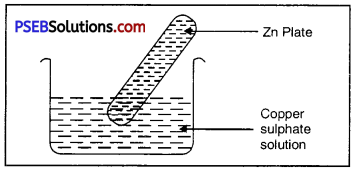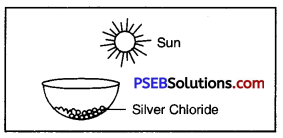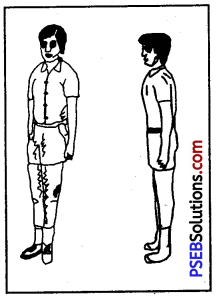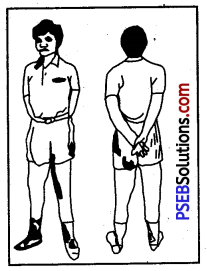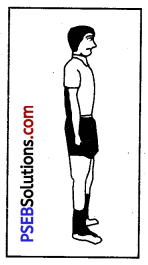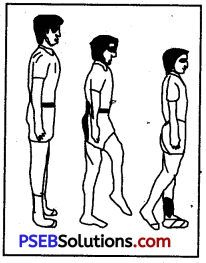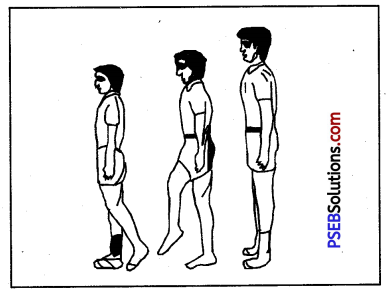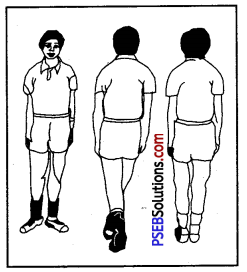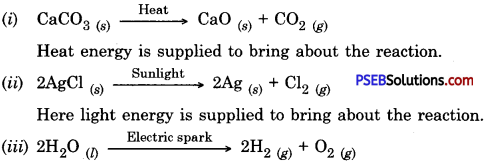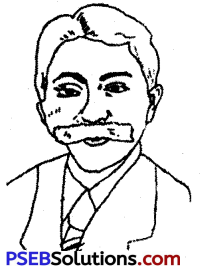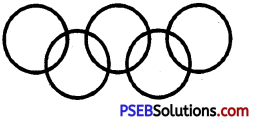Punjab State Board PSEB 10th Class Social Science Book Solutions Civics Chapter 5 Indian Foreign Policy and United Nations Textbook Exercise Questions and Answers.
PSEB Solutions for Class 10 Social Science Civics Chapter 5 Indian Foreign Policy and United Nations
SST Guide for Class 10 PSEB Indian Foreign Policy and United Nations Textbook Questions and Answers
I. Answer the following questions in brief:
Question 1.
Mention four basic principles of India’s foreign policy.
Answer:
The following are the four main principles of India’s foreign policy :
- Faith in the policy of non-alignment
- Faith in the principles of Panchsheel,
- Full faith in the U.N.
- Opposition to colonialism and imperialism.
Question 2.
What do you mean by Panchsheel?
Answer:
On April 29, 1954, Pandit Jawaharlal Nehru, the Prime Minister of India and Chou-en-Lai, P.M. of China formulated five principles of peaceful co-existence for the nations of the world. These five principles are calledTanchsheel. The main objective of Panchsheel is to maintain world peace by promoting peaceful co-existence.
Question 3.
What do you understand by the policy of Non-alignment?
Answer:
Non-alignment implies not belonging to any power bloc but having friendly relations with all the countries. It also means making decisions independently on the basis of merit to solve international problems. Pandit Jawaharlal Nehru was one of the founders of this policy.
Question 4.
Describe one basic reason which created bad blood between India and the United State of America.
Answer:
India has refused to join military pacts set up by America.
Question 5.
What is the Atomic Policy of India?
Answer:
To use the atomic energy for constructive and peaceful purposes.
![]()
Question 6.
Enumerate the number of permanent members and non-permanent members of the Security Council.
Answer:
The Security Council has 15 members. Out of them five are permanent members. The remaining ten are temporary members. Each temporary member is elected for a term of 2 years by the General Assembly. The five permanent members are: U.S.A., Russia, Great Britain, France and China.
Question 7.
When the UN came into existence and how many were its original members?
Answer:
The United Nations was founded on October 24, 1945. It had 51 original (founder) members.
Question 8.
What do you mean by Disarmament?
Answer:
Disarmament means destruction or reduction of arms. The term implies voluntary destruction of arms and the creation of world without arms.
Question 9.
Describe the basic cause of tension and stagnation of relations between India and China.
Answer:
The border dispute is the main cause of tension between India and China. This tension became intense when China attacked India in 1962.
Answer the following questions in short:
Question 1.
Describe the main principles of Indian foreign policy.
Or
Write down three principles of India’s foreign policy.
Answer:
The following are the main principles of Indian Foreign Policy :
- Non-alignment. It is the basic principle of India’s foreign policy. India was the first country that initiated the policy of Noii-alignment.
- Opposition to Imperialism. India has always opposed imperialism and colonialism.
- Opposition to the policy of Caste, ColoSr and Discrimination etc. India has always raised voice against the policy of Caste, Colour and Discrimination.
- Faith in the United Nations. India is a founder member of the United Nations and has full faith in the aims and principles of the United Nations.
- Panchsheel. Panchsheel is an important principle of Indian foreign policy.
- Friendly Relations with other States. India is always ready to have friendly relations with other States of the world.
Question 2.
Write a brief note on Panchsheel.
Answer:
On April 29, 1954, Pandit Jawaharlal Nehru, the Prime Minister of India and Chou-en-Lai, the Prime Minister of China held a meeting in Delhi. They formulated five principles of peaceful co-existence between the nations of the world. These principles are called Panchsheel.
Following are these principles:
- Mutual respect for each other’s territorial integrity and sovereignty.
- Non-aggression. In other words, the disputes among the nations should be settled by negotiations.
- Non-interference in the internal affairs of other states.
- To endeavour to achieve mutual gains and co-operation.
- To adhere to the policy of peaceful co-existence among different nations Live and let live. If these principles are respected, there can be no danger of any deadly war in the world.
![]()
Question 3.
Describe the meaning of the’^bficy of Non-alignment and reasons for its adoption by India.
Answer:
Non-alignment implies not belonging to any power bloc and having friendly relations with all the countries. It also means taking decisions independently on the basis of merit while solving international problems. Pandit Jawahar Lai Nehru was one of the founders of this policy.
Reasons. At the time of our independence, there were two power blocs in the world: the American bloc and the Russian bloc. ‘There existed tension between the two blocs. Thus there was a cold war between them. Newly^^.d countries could reduce this tension and make progress with the aid of both, tfiesel.two.blocs. So they did not join any bloc and formed their own group. Pandit Jawaharl, ejiru based India’s foreign policy on the principle of Non-alignment.
Question 4.
Describe the organisation and functions of the General Assembly, Security Council and International, Court of Justice.
Answer:
General Assembly. It is made up of all the member nations of the U.N.O. each of whom has one vote. However, each member state can send five representatives to attend its meetings. The Assembly takes decisions on ordinary matters by a simple majority. It passes the annual budget of U.N.O.
Security Council: It is made up of 15 members out of Ayhqm five are permanent members. The remaining ten members are elected for a term of two years by the General Assembly.
The Security Council is entrusted with the task of preserving world peace. It tries to settle disputes between the different nations in a just and fair manner.
International Court of Justice:
It is called “The World Court”. The Court hears and decides, disputes arising between states according to International Law. It also gives advice to the General Assembly on legal matters.
Question 5.
Describe the role of India in the United Nations.
Answer:
India is one of the 51 founder members of the United Nations. From the very beginning, the Indian leaders have been keeping a firm faith in this great institution. It has been playing an important role in the functioning of the United Nations.
- India stood for anti-colonialism. India along with other members got the resolution passed against imperialism and colonialism in 1950.
- Admission of New States. India tried her best for the admission of Communist China and Bangladesh. ,
- Cooperation in ending wars in other Countries. India supported the peace efforts of the United Nations to put an end to the wars in Egypt, Congo, Korea and Indo-China.
- Against Racial Discrimination. India, with the cooperation of the United Nations, raised a strong voice against the policy of racial discrimination followed by the imperialist government in South Africa.
- Human Rights. With the cooperation of the United Nations, India raised a strong voice of protest against the countries.which violated the human rights.
- Support of Disarmament. India have so supported disarmament for lessening the possibility of wars.
![]()
Question 6.
Describe the main reasons which Abated tension and hostility between India and Pakistan.
Or
Write a short note on the Indo-Pak relationship and their main dispute.
Answer:
India has made every effort to establish friendly relations with Pakistan but the tension and hatred between the two countries has never ended. The two countries had border disputes, river water distribution disputes and had to make settlement of evacuee property. The dispute about the sharing of river waters between the two countries was settled with the help of the World Bank^ through the Indus Water Treaty in 1960. The settlement of border disputes and the prql^em of evacuee property have been solved to a great extent. But the Kashmir problem is the bone of contention between the two countries.
Question 7.
Discuss briefly Indo-American relations.
Answer:
India and U.S.A. are the two largest democracies in the world. During 1947-2001 the relations between the two countries were marked by two opposite features. On one side, there was a spirit of co-operation and friendship between the two countries. But on the other, their relations were strained and conflicting. There has been, however, a marked improvement in the relations between the two countries since 2000 A.D. Both these countries are fighting against terrorism
The U.S.A. had begun to give massive military aid to Pakistan. This was strongly opposed by India. The lowest point in the Indo-US relations came in 1971 when India signed the Treaty of peace, friendship and co-operation with the USSR. India’s peaceful nuclear explosion on May 18, 1974, at Pokhran was strongly criticised by the US leaders and the people. There has been a marked improvement in the relations between America and India since 2001 A.D. The President of the U.S.A. Barack Obama visited India in January 2015.
PSEB 10th Class Social Science Guide Indian Foreign Policy and United Nations Important Questions and Answers
Answer the following questions in one line or one word :
Question 1.
Describe one cause of tension between India and Pakistan.
Answer:
Pakistan has been claiming Kashmir since independence whereas it is an integral part of India.
Question 2.
Describe one positive aspect of Indo-Pak relationship.
Answer:
On 17th Feb., 1999, India and Pakistan signed a formal agreement for launching the Delhi-Lahore Bus Service.
Question 3.
Give the names of the founder countries of the Non-alignment Movement.
Answer:
India, Yugoslavia and Egypt.
Question 4.
Mention any one object of the establishment of the United Nations.
Answer:
To maintain international peace and security.
![]()
Question 5.
Mention one important function of the Security Council.
Answer:
To help in maintaining international peace and security.
Question 6.
Throw light on any ope aspect of India’s policy of Non-alignment.
Answer:
Not to join any of the power blocs.
Question 7.
Mention any one cause for the establishment of the United Nations.
Answer:
The United Nations Organisation was established to maintain peace in the world.
Question 8.
Give one example of the work done by the U.N. for world peace.
Answer:
In 1949, it made the Dutch forces to vacate Indonesia.
Question 9.
What do you mean by Human Rights?
Answer:
Human Rights are those conditions of social life without which no man can be his best self.
Question 10.
Why is disarmament necessary? Give one reason.
Answer:
To save humanity from total destrubtidh.
![]()
Question 11.
What was Marshall Plan of America?
Answer:
The Marshall Plan was a big programme of American aid-to the European nations to rebuild their war shattered economies.
Question 12.
Why were SEATO and Baghdad pacts prepared by the U.S.A.?
Answer:
To check spread of communism.
Question 13.
What is India’s Atomic or Nuclear Policy?
Answer:
India wants to make’ the use of atomic energy.for constructive and peaceful purposes.
Question 14.
What is meant by atomic weapons?
Answer:
The weapons which are exploded by the use of atomic or nuclear energy are called atomic weapons.
Question 15.
Which powers colonised Africa?
Answer:
The continent of Africa was colonised by Britain, France, Italy, Portugal and Belgium.
Question 16.
When was Bangla Desh created?
Answer:
In 1971.
Question 17.
Write down the names of two permanent members of the Security Council.
Answer:
England and U.S.A.
![]()
Question 18.
What is meant by policy of Non-alignment?
Answer:
Non-alignment implies not belonging to any power bloc but to have friendly relations with all countries.
Question 19.
Write down the names of two organs of the United Nations.
Answer:
1. General Assembly and
2. Security Council.
Question 20.
Enumerate the number of non-permanent members of Security Council of UNO.
Answer:10.
Fill in the blanks:
Question 1.
There are ____________ organs of the United Nations.
Answer:
six
Question 2.
United Nations was established on ___________
Answer:
24th October, 1945
Question 3.
Originally United Nations consisted of ___________ members.
Answer:
51
Question 4.
Pt. ___________ is rightly acknowledged as the chief architect of India’s foreign policy.
Answer:
Jawaharlal Nehru
![]()
Question 5.
The train characteristic of India’s foreign policy is ___________
Answer:
Non-alignment,
Question 6.
India has full faith in the ___________ of United Nations.
Answer:
principles
Question 7.
At present United Nations consists of ____________ members.
Answer:
193
Question 8.
The word ‘Panchsheel’ stands for principles.
Answer:
five
Question 9.
___________ is a major issue of conflict between India and Pakistan.
Answer:
Kashmir
Question 10.
There are ___________ permanent members of the Security Council.
Answer:
five.
Choose the correct answer :
Question 1.
China made a sudden attack on India in:
(a) August 1962
(b) September 1962
(c) October 1962
(d) September 1965.
Answer:
(c) October 1962
Question 2.
The Principles of Panchsheel were signed between the Heads of the Govt. of:
(a) India and China
(b) India and Pakistan
(c) India and Japan
(d) Inia and Nepal.
Answer:
(a) India and China
Question 3.
The architect of Non-alignment is:
(a) Indira Gandhi
(b) Dr. Rajinder Praad
(c) Atal Behari Vajpaye
(d) Pt. Jawaharlal Nehru.
Answer:
(d) Pt. Jawaharlal Nehru.
Question 4.
India became a member of U.N. in:
(a) 1945
(b) 1947
(c) 1950
(d) 1960.
Answer:
(a) 1945
Question 5.
Which organ of United Nations has all the member states as Its members?
(a) Security Council
(b) General Assembly
(c) International Court of Justice
(d) Economic and Social Council.
Answer:
(b) General Assembly
![]()
Question 6.
Bangladesh was established in:
(a) 1965
(b) 1972
(c) 1971
(d) 1970.
Answer:
(c) 1971
Question 7.
International Court of Justice has _________________ Judges.
(a) 15
(b) 10
(c) 22
(d) 20.
Answer:
(a) 15
Question 8.
Which of the following is not a basic principle of India’s foreign policy?
(a) Non-alignment
(b) Friendly relations with other states
(c) Faith in United Nations
(d) Faith in Imperialism and Colonialism.
Answer:
(d) Faith in Imperialism and Colonialism.
Question 9.
Who was the first woman president of the U.N. General Assembly?
(a) Sarojini Naidu
(b) Aruna Asaf Ali
(c) Vijya Luxmi Pandit
(d) Raj Kumari Amrit Kaur.
Answer:
(c) Vijya Luxmi Pandit
![]()
Question 10.
Which of the following is not a permament member of U.N. Security Council?
(a) India
(b) U.S.A.
(c) Russia
(d) England.
Answer:
(a) India
Short Answer Type Questions
Question 1.
Why are security and defence so important for India today?
Answer:
It was easier to defend the frontiers of India in ancient times. The Himalayas served as the sentinal in the north. The ocean protected us in the south. But now the high Himalayas and the deep oceans have lost their importance as the protectors of the country. Due to the progress of science and technology, the mountains ánd the seas are no longer barriers to check the enemy. So it has become very important for India to defend her borders. Secondly, our relations with some of our neighbours are not very friendly. We have to defend ourselves against them. So India’s need for defence and security is greater these days.
Question 2.
Write the names of any four organs of the United Nations. Explain one important function of each organ.
Answer:
Following are the four main organs of the United Nations.
- General Assembly,
- Security Council,
- Economic and Social Council and
- International Court of Justice.
Question 3.
Give some suggestions to Improve the relations between India and Pakistan.
Answer:
The relations between India and Pakistan can be improved by promoting common interests of both the countries.
The following steps should be taken in this direction:
- Trade relations between both the countries should be strengthened.
- Efforts should be made to improve cultural and educational relations between the two countries.
- There should be friendly sports matches between the teams of the two countries.
Question 4.
When was the United Nations established? Mention its aims.
Answer:
The United Nations was established, on 24th October 1945. The number of its founder members was 51. But now about 209 countries of the world are its members. India is one of its founder members.
Following are its aims :
- To settle the disputes between the states through peaceful means.
- To promote friendly relations among the member states.
- To find solutions to social and economic problems of the world.
- To protect and uphold the freedom and rights of man.
- To maintain world peace.
- To strive hard to achieve these objects.
Question 5.
Write the full names of ILO, UNESCO, FAO and WHO. Write the functions of any two of these organisations.
Answer:
ILO, UNESCO, FAO and WHO are specialized agencies of the United Nations.
1. ILO: Its full name is International Labour Organisation.
Its functions are as under :
- It tries to improve the living and. working conditions of the labourers.
- To fix minimum wages and hours of work for the workers.
2. UNESCO: Its full name is United Nations Educational Scientific and Cultural Organisation. Its main function is to promote educational, scientific and cultural co-operation among the member nations of the world.
3. FAO: Its full name is Food and Agricultural Organisation. Its main function is to
formulate schemes to increase agricultural production and consider the food situation of all the nations. . ,
4. WHO: Its full name is World Health Organisation. Its main function is to protect the health of people and to eradicate diseases.
![]()
Question 6.
Write a short note on the following :
(i) SAARC
(ii) Veto Power.
Answer:
(i) SAARC: Its full name is South Asian Association for Regional Cooperation. It is an organisation of developing countries of South Asia. Its members are—India, Pakistan, Bangladesh, Nepal, Bhutan, Sri Lanka and Maldives. Some similarities are found in the cultural and economic problems of these countries. The representatives of these countries sit together to solve their problems and promote mutual cooperation.
(ii) Veto Power: The permanent members of the Security Council possess Veto power. These members are United States, Britain, China, France and Russia. For all effective decisions of this body, the unanimity of these five big powers is compulsory. This implies that these big powers have a veto on all important decisions of the council and anyone of these five powers can prevent it from taking any action against any country.
Question 7.
Mention some positive aspects of Indo-China relationship.
Answer:
- Both the countries have agreed to solve their border dispute through a special committee consisting of officials from the both sides.
- Both the countries have agreed to extend economic co-operation to each other. There is a considerable increase in the trade between the two countries.
- In 1988, the then Prime Minister of India, Rajiv Gandhi, visited China. The Chinese Prisident visited India in December 1991 and again in 2014. The way for the restoration of friendly relations between the two countries became clear. Since then many good-will missions have’been exchanged between the two countries.
Question 8.
Write down six features of India’s Foreign Policy.
Answer:
- To make efforts for security and peace in the world.
- To support the movements for self-determination in the colonies.
- To oppose racialism.
- Settlement of international disputes by peaceful methods.
- To co-operate with U.N.O. and its Specialized Agencies.
- To support the Non-Alignment movement and to remain away from the military blocs.
Question 9.
Write a short note on United N&tibns’ Security Council.
Answer:
The United Nations Security Council is one of the six principal organs of the United Nations. The UNSC was formed in 1945 following World War II to address the failings of the previoifs international organisation i.e. the League of Nations to maintain world peace. The Security Council consists of 15 members. Soviet Union (Russia), United Kingdom, France, China and United States of America are its five permanent members. These countries can veto any resolution. There are 10 non-permanent members elected on regional basis to serve for a term of two years. The Council held its first session on 17th January, 1946.
Question 10.
What is the contribution of India to promote world peace?
Answer:
Following the policy of Non-Alignment, Indi%has always condemned colonialism and imperialism.
![]()
Question 11.
Enumerate six main organs of the U. N. O.
Answer:
Following are the names of the chief organs of the U. N. 0.:
- The General Assembly.
- The Security Council.
- Economic and Social Council.
- The Trusteeship Council.
- The Secretariat.
- International Court of Justice.
Question 12.
Name five permanent members of the Security Council.
Answer:
Following are the names of five permanent members of the Security Council of the U.N. – United States of America, Great Britain, Russia, China, and France.
Question 13.
Briefly explain the International Court of Justice.
Answer:
There is a total of fifteen judges in the International Court of Justice. Its headquarter is the Hague in Holland. Its main task is to settle the disputes between the U.N.O.’s member countries.
Question 14.
Write down a note on Secretary-General of the U. N.O.
Answer:
The head of the Secretariate of U.N.O. is called Secretary-General. He is appointed by the U. N. Assembly on the recommendation of the Security Council for five years. Now Antonio Guterres is Secretary-General of UNO.













